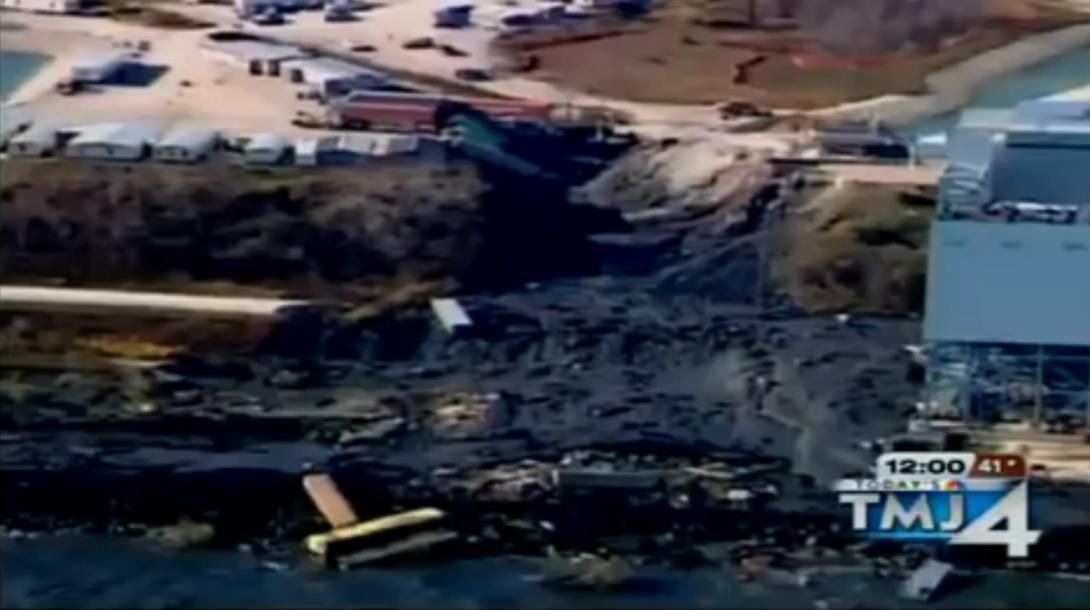New coal ash hazards come to light as Congress fights regulation

The Environmental Protection Agency has released new data on coal ash ponds that shows a threefold increase in the number rated as significant hazards.
The discovery came to light shortly before a massive bluff built of coal ash at We Energies' Oak Creek power plant in Wisconsin collapsed into Lake Michigan, sending a football field-size plume of waste into the water and dredging up memories of the December 2008 collapse of a coal ash pond at the Tennessee Valley Authority's Kingston plant on the Emory River in East Tennessee. We Energies had already been providing bottled water to nearby residents of the plant whose wells have been contaminated by pollution believed to be seeping from the facility's coal ash landfills.
To date, the EPA and environmental advocates have documented 137 cases nationwide where coal ash has caused environmental damages, with most of them involving contamination of water supplies.
But despite mounting evidence of the current regulatory system's failure to protect people and the environment from the hazards of coal ash, members of Congress continue to fight against a proposal for strict federal oversight.
Just last month, the U.S. House of Representatives passed a bill sponsored by Rep. David McKinley (R-W.Va.) stripping the Environmental Protection Agency of the ability to impose strict federal regulations on coal ash. A similar bill is now being considered by the U.S. Senate. The proposed regulation those measures are targeting was crafted by the EPA in the wake of the Kingston disaster.
"How many coal ash spills are going to have to occur before Congress and the EPA acknowledge the very real dangers posed by this industrial waste?" asked attorney Lisa Evans with the nonprofit environmental law firm Earthjustice.
Evans' group recently reported on the EPA's latest data on hazardous coal ash ponds. The agency is rating facilities nationwide based on National Inventory of Dams criteria considering the damage that would occur if the pond collapsed. Those ratings are less than low; low; significant, meaning a failure could cause economic and environmental damage; and high, meaning a collapse would likely kill people.
The EPA's latest data shows 181 significant-hazard dams in 18 states -- more than three times the 60 significant-hazard ponds listed in the agency's original 2009 database. Eight of the previously unrated coal ash ponds were found to be high hazards. They include the ponds at Louisville Gas & Electric's Mill Creek Station in Louisville, Ky. and Alabama Power/Southern Company's Gaston plant in Wilsonville, Ala.
Among the 18 states that gained significant-hazard ponds are eight in the South: Alabama, Georgia, Kentucky, Louisiana, Mississippi, North Carolina, South Carolina and Virginia.
Those states have a total of 67 representatives in the House. Of that total, 52 voted to block strict federal oversight -- including the entire delegations of Louisiana, Mississippi and South Carolina.
(Shot of Wisconsin coal ash spill is a still from WTMJ News video.)
Tags
Sue Sturgis
Sue is the former editorial director of Facing South and the Institute for Southern Studies.
